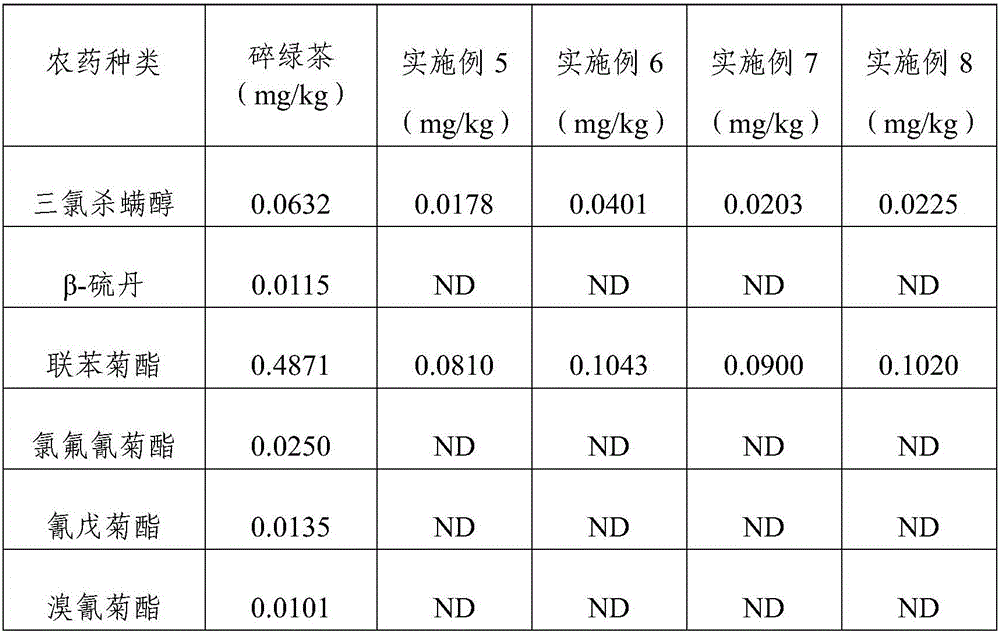Preparation method of ECG (epigallocatechin gallate) monomer
A monomer and functional monomer technology, applied in the field of preparation of epicatechin gallate monomer, can solve problems such as human health and safety hazards, export trade obstruction, market application restrictions, etc., and achieve good economic benefits and social value , large amount of preparation and short preparation cycle
- Summary
- Abstract
- Description
- Claims
- Application Information
AI Technical Summary
Problems solved by technology
Method used
Image
Examples
Embodiment 1
[0044] Example 1 Preparation of polymers that specifically recognize ECG
[0045] Add 8.80g of ECG and 6.90g of methacrylic acid monomer reactant into 300mL of chloroform, and react for 2 hours at 4°C in the refrigerator, then add 100g of EGDMA and 2.40g of azobisisobutyronitrile, and ultrasonicate for 10 minutes to make EGDMA Dissolve completely with azobisisobutyronitrile to obtain a mixed solution; shake and react at 60°C for 48 hours, filter the obtained polymer, discard the solution, grind the precipitated polymer, and use 500 mL of methanol and glacial acetic acid with a volume ratio of 9:1 The polymer was subjected to Soxhlet extraction with a mixed solvent, and the extraction was repeated 6 times, each time for 12 hours; after the extraction was completed, the polymer was washed with 200 mL of deionized water and methanol for 20 minutes, and repeated 5 times until the solution was neutral. Finally, dry it in vacuum at 60°C to obtain it.
Embodiment 2
[0046] Example 2 Preparation of polymers that specifically recognize ECG
[0047] Add 8.80g of ECG and 10.6g of methylene succinic acid into 300mL of toluene, react for 4 hours at 4°C in the refrigerator, add 80g of EGDMA and 2.60g of azobisisobutyronitrile, and ultrasonicate for 10 minutes to make EGDMA and diisobutyronitrile Completely dissolve azidione to obtain a mixed solution; shake and react at 70°C for 20 hours, filter the obtained polymer, discard the solution, grind the precipitated polymer, and use 500 mL of a mixed solvent of methanol and glacial acetic acid with a volume ratio of 8:1 The polymer was subjected to Soxhlet extraction, and the extraction was repeated 8 times, each time for 8 hours; after the extraction was completed, the polymer was washed with 200 mL of deionized water and methanol for 20 minutes, and repeated 5 times until the solution was neutral. ℃ vacuum drying, that is.
Embodiment 3
[0048] Example 3 Preparation of polymers that specifically recognize ECG
[0049] Add 8.80g of ECG and 11.8g of p-vinylbenzoic acid into 300mL of chloroform, and react for 4 hours at 6°C in the refrigerator, then add 100g of EGDMA and 2.60g of azobisisobutyronitrile, and ultrasonicate for 10 minutes to make MBAA and azo The diisobutyronitrile was completely dissolved to obtain a mixed solution; the reaction was shaken at 70°C for 20 hours, the obtained polymer was filtered, the solution was discarded, the polymer precipitate was ground, and the mixed solvent of methanol and glacial acetic acid with a volume ratio of 500mL of 10:1 was used to The polymer was subjected to Soxhlet extraction, and the extraction was repeated 6 times, each time for 12 hours; after the extraction was completed, the polymer was washed with 200 mL of deionized water and methanol for 20 minutes, repeated 5 times until the solution was neutral, and finally 60 ° C Vacuum drying, that is.
PUM
 Login to View More
Login to View More Abstract
Description
Claims
Application Information
 Login to View More
Login to View More - R&D
- Intellectual Property
- Life Sciences
- Materials
- Tech Scout
- Unparalleled Data Quality
- Higher Quality Content
- 60% Fewer Hallucinations
Browse by: Latest US Patents, China's latest patents, Technical Efficacy Thesaurus, Application Domain, Technology Topic, Popular Technical Reports.
© 2025 PatSnap. All rights reserved.Legal|Privacy policy|Modern Slavery Act Transparency Statement|Sitemap|About US| Contact US: help@patsnap.com



